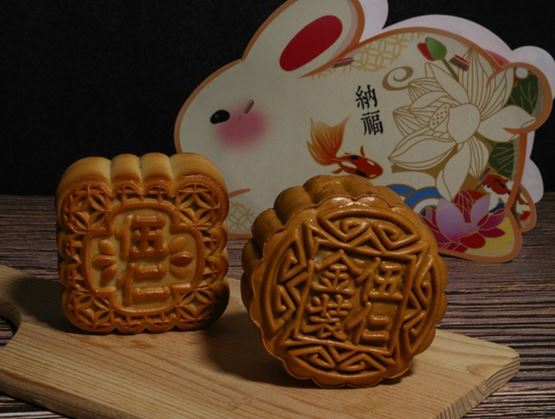The mooncake is deeply rooted in Chinese tradition: on the 15th day of the 8th lunar month the full moon symbolises reunion and completeness, and sharing mooncakes has long been one of the festival’s central rituals. China remains by far the largest single market for mooncakes, with over 95 % of global volume accounted for in the country in recent years.
However, several structural factors are shifting how mooncakes are produced, gifted, consumed. In recent years the market has been moving away from the ultra-luxury, high-price “face-giving” (showing status) gift boxes whose packaging costs were under regulatory scrutiny. For example, in 2023, China’s mooncake sales reached €3.31 billion and from January to Aug 2025 the value reached €5.20 billion, with the high-end segment (above €61.00) shrinking to only 1.8% of revenue. As the market matures, growth is found increasingly through premiumisation (better quality, niche flavours), health orientation (low sugar, low fat) and digital/online channels. Younger consumers (Gen Z / Millennials) show different behaviour: they are less bound by tradition, more influenced by new flavours, packaging design, experiential consumption and social-media sharing. For example, one study notes snack brands in China are blending heritage ingredients with modern formats. Autumn in Chinese culture therefore sees not just the ritual of mooncakes but a dynamic moment for brands to engage, innovate and capture shifting consumer demand.
How brands are adapting their offering

Gift boxes, luxury packaging and brand collaborations
Firms have traditionally used mooncakes as premium gift-items during the festival season. Luxury brands and global names have borrowed the custom to reinforce prestige, with limited-edition boxes, collaborations and strong design. For example, major luxury firms’ mooncake boxes routinely trend on Chinese social platforms. These high-end boxes serve dual purposes: consumer gifting and corporate/business gifting.
However, rising regulatory and consumer scrutiny of “excessive packaging” is shifting the paradigm. In China, packaging costs as a share of sales must not exceed 15% for mooncakes above a certain price threshold. This reduces the appeal of ostentatious packaging and leads to more sober, quality-driven offers.
Innovation in flavours, formats and consumption occasions
Brands are extending the concept of mooncakes beyond the classical lotus-seed paste and salted egg-yolk into more modern formats: snow skin mooncakes (冰皮月饼) eaten cold, ice-cream mooncakes, savoury-fusion flavours, regional speciality fillings, health-conscious versions with reduced sugar or alternative crusts. For example, a snack-market review noted “black truffle mooncakes or Longjing tea cheese puffs” as examples of brands blending heritage ingredients with modern appeal.
Formats are also shifting with individual portions, loose packs (rather than only large gift boxes), online exclusives, experiential packaging (photo-worthy unboxing) and collaboration packs with other brands (e.g., coffee, tea, chocolate). Social media content around mooncake unboxing, hauls and limited drops is increasingly common.
Health, value and mid-price segmentation
The mid-price segment (€10 to €37) is now becoming dominant, while super-premium segments (above €61) are diminishing in share. In 2025 the mid-range segment accounted for about 61% of sales, up 9 percentage points year-on-year. Moreover, health-oriented mooncakes (low sugar, low fat, reduced oil) are gaining traction: one source states 56% of respondents are concerned about mooncake ingredient healthiness.
Brands are therefore adjusting to a market where gifting remains important but the emphasis is shifting toward meaningful value, good quality ingredients, transparent sourcing, flavour novelty and lifestyle fit rather than purely status-show.
New ways of consumption
Traditionally, mooncakes were enjoyed at home with family, often accompanied by tea during Mid-Autumn reunions. Today, however, new consumption patterns are reshaping the category. Snacking and sharing are becoming more common than formal gifting, with smaller packs and shareable formats encouraging individual enjoyment outside the main festival meal. Online purchasing has also surged, with many mooncakes now bought through e-commerce platforms, social-commerce livestreams and mini-programs, especially among younger urban consumers. These channels make rapid product drops, influencer collaborations and limited editions far more accessible.
Consumption occasions have diversified as well. Mooncakes are increasingly eaten in cafés with coffee, in tea houses, as a dessert after meals or at social gatherings, rather than only within traditional family settings. Premium variants may even be paired with wine or imported teas in upscale venues. A growing focus on health is also influencing behaviour: because traditional mooncakes are high in sugar and fat, newer low-sugar and low-oil varieties attract health-conscious consumers who prefer to enjoy them as lighter afternoon snacks rather than heavy festive desserts.
Finally, social media culture is transforming how mooncakes are perceived. Younger consumers are increasingly buying them for personal enjoyment rather than for gifting, collecting limited-edition boxes and sharing their “unboxing” moments online. This element of self-indulgence and visual storytelling now plays a significant role in the appeal of mooncakes.
Thus the mooncake is transforming from a once-a-year token into a more versatile snack and lifestyle product, especially in urban and younger demographics.
Implications for brands and retailers
For brands operating in China (whether domestic or international) the metamorphosis of the mooncake market implies several strategic considerations:
Product segmentation has become essential, requiring brands to decide whether they are targeting the premium gift segment, the mid-price gifting-plus-consumption segment or the self-purchase/snacking segment, as each demands distinct packaging, price points, flavour profiles and marketing channels. Localisation and cultural authenticity also play a decisive role, with success often depending on a brand’s ability to honour tradition and incorporate region-specific flavours or cultural motifs while still innovating. Many global F&B brands now integrate mooncakes into their seasonal offerings with locally inspired twists.
A balanced channel strategy is increasingly important. Offline retail such as supermarkets and specialty stores remains critical for traditional gifting, while digital channels like livestreaming, social commerce and mini-programs are indispensable for attracting younger consumers and triggering impulse purchases. Packaging, meanwhile, must strike a balance between aesthetics, cost and growing regulatory expectations regarding sustainability and material use, prompting brands to invest more judiciously in gift-box design.
Innovation in flavour and format is most effective when aligned with evolving consumer values, from health and authenticity to indulgence and the allure of limited editions. Marketing, too, must extend beyond product to emotion and storytelling; given the cultural resonance of mooncakes, narratives around heritage, regional origin and ingredient sourcing carry significant weight. Brands that reduce mooncakes to a simple novelty risk overlooking their deeper cultural meaning. Finally, timing remains crucial. While the Mid-Autumn Festival drives a clear seasonal peak, brands that build awareness early through pre-season drops, early-bird offers or teaser collaborations tend to capture a larger share of the market.

As China’s mooncake market continues to evolve, the autumn trend is less about saturated boxes of status-driven gifting and more about meaningful, high-quality, experience-led offerings. The future appears structurally oriented towards mid-price segments, health-conscious formulations, consumption beyond the classic family table, and digital engagement with younger consumers. Brands that adapt their product portfolios, marketing narratives and sales channels accordingly will be best placed to capitalise on the seasonal moment and its deeper enduring values of reunion, flavour and culture.

